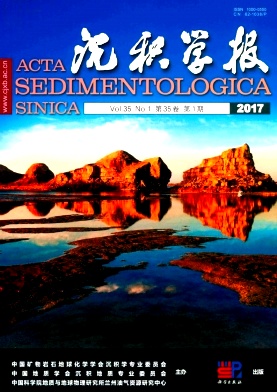Research Progress and Sedimentation Experiment Simulation about Alluvial Fan: A case study on alluvial fan controlled by debris flow and braided river
doi: 10.14027/j.cnki.cjxb.2017.01.002
- Received Date: 2015-12-29
- Rev Recd Date: 2016-03-28
- Publish Date: 2017-02-10
-
Key words:
- alluvial fan /
- research progress /
- experimental of flume sedimentation simulation /
- reservoir architecture /
- contemporaneous reverse fault
Abstract: In recent years, it has widespread attention about study of the alluvial fan complex deposition mechanism and sedimentary process. Alluvial fan correlational research has made great improvement. This paper is summarized in details about alluvial fan classification and sedimentary characteristics, alluvial fan reservoir architecture characterization, and mechanism of alluvial fan formation. Later, the experimental simulation of the alluvial fan deposition process is carried out by using the experimental of flume sedimentation simulation. Research shows that:(1) Alluvial fan has a variety of classification schemes that reflects the diversity and complexity of alluvial fan. There are many methods to characterize alluvial fan, mainly includes modern sedimentation survey and outcrop, underground dense well pattern, and experimental of flume sedimentation simulation, and so on. Controlling alluvial fan development allogenetic cycle factors mainly include difference activity of tectonic, styles of contemporaneous fault combination, climate and provenance source change etc.; There are many kinds of autogenetic cycle factors under the control of alluvial fan depositional mechanism that determines the distribution of alluvial fan internal architecture unit.(2)Alluvial fan sedimentary process has following features. Firstly, after the initial prototype fan body formation, water laden sediments has trend to deposit on low lying position. Secondly, there are two important ways of channel migration, a single main channel migration and minor branched channel migration. A main reason of fan body to increase the length caused by a single main channel migration, while the important mechanism of the fan body width increases being minor branched channel migration. Multi-period fan body obvious retrograded overlying pattern of up-dipping towards the provenance with stable tectonic conditions. Finally, on the basis of the foregoing, the next research direction was discussed.
| Citation: | YIN SenLin, LIU ZhongBao, CHEN YanHui, WU XiaoJun. Research Progress and Sedimentation Experiment Simulation about Alluvial Fan: A case study on alluvial fan controlled by debris flow and braided river[J]. Acta Sedimentologica Sinica, 2017, 35(1): 10-23. doi: 10.14027/j.cnki.cjxb.2017.01.002 |






 DownLoad:
DownLoad: